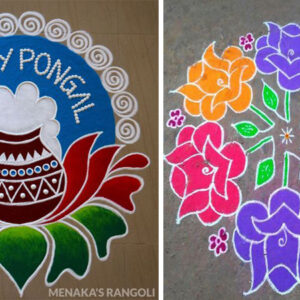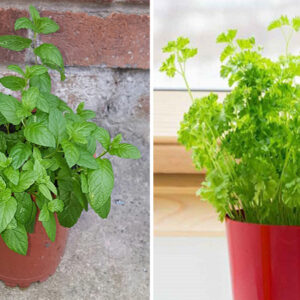India’s rich cultural heritage is reflected in its myriad painting styles, each offering a unique glimpse into the country’s history and traditions. From intricate folk art to grand classical paintings, Indian art forms are a testament to the nation’s diverse artistic legacy. In this article, we explore 20 distinctive types of painting styles from different regions of India.
20 Different Types of Painting Styles in India 2024:
Discover 20 unique types of painting styles from India, including Madhubani, Warli, and Tanjore. Explore their history, techniques, and cultural significance in this comprehensive guide.
1. Madhubani Painting:
Overview:
Madhubani painting, also known as Mithila art, originates from the Mithila region of Bihar. Known for its intricate patterns and vibrant colors, it often depicts mythology, nature, and social events.
Characteristics:
- Use of natural dyes and pigments
- Intricate designs with fine brushes or twigs
2. Warli Art:
Overview:
Warli art is a tribal art form from Maharashtra, characterized by its simple, monochromatic style using white pigment on a mud-brown background. It portrays daily life, festivals, and the environment.
Characteristics:
- Basic geometric shapes
- Traditional monochromatic scheme
3. Pattachitra:
Overview:
Pattachitra is a traditional painting style from Odisha and West Bengal, known for its intricate details and mythological narratives. These paintings are typically created on cloth or dried palm leaves.
Characteristics:
- Fine, detailed brushwork
- Themes from mythology and folklore
4. Tanjore Painting:
Overview:
Tanjore (Thanjavur) painting, from Tamil Nadu, is famous for its rich colors, surface richness, and compact composition. These paintings often feature Hindu gods and goddesses, adorned with gold foil.
Characteristics:
- Use of gold foil and semi-precious stones
- Rich, vibrant colors
5. Kalamkari:
Overview:
Kalamkari, deriving its name from “kalam” (pen) and “kari” (craft), is a hand-painted or block-printed cotton textile from Andhra Pradesh. It involves intricate designs and storytelling through fabric.
Characteristics:
- Natural dyes
- Intricate freehand drawing or block printing
6. Miniature Paintings:
Overview:
Indian miniature paintings, prevalent in Rajasthan, Mughal courts, and Pahari regions, are small, highly detailed, and vibrant. They often depict court scenes, battles, and legends.
Characteristics:
- Fine brushwork
- Historical and mythological themes
7. Gond Art:
Overview:
Gond art is a tribal art form from Madhya Pradesh, characterized by its use of vibrant colors and intricate patterns. It often depicts animals, birds, and nature.
Characteristics:
- Dots and lines to create patterns
- Bright, natural colors
8. Phad Painting:
Overview:
Phad painting, from Rajasthan, is a form of religious scroll painting. It narrates stories of local deities and is used in folk performances.
Characteristics:
- Large, narrative scrolls
- Bold, colorful depictions of deities
9. Rajput Painting:
Overview:
Rajput painting, from the royal courts of Rajasthan, is known for its bold colors and intricate details. These paintings often depict court scenes, legends, and nature.
Characteristics:
- Use of gold and silver
- Detailed human and animal figures
10. Pichwai Painting:
Overview:
Pichwai paintings, from Nathdwara in Rajasthan, are devotional paintings dedicated to Lord Krishna. These intricate artworks are used as backdrops in temples.
Characteristics:
- Detailed and ornate designs
- Religious themes and motifs
11. Mysore Painting:
Overview:
Mysore painting, from Karnataka, is known for its elegance and detailed work. These paintings typically depict Hindu gods and goddesses.
Characteristics:
- Use of muted colors and gold leaf
- Fine, delicate brushwork
12. Cheriyal Scroll Painting:
Overview:
Cheriyal scroll painting, from Telangana, is a form of narrative scroll painting that depicts stories from Indian epics and folklore.
Characteristics:
- Bright colors and bold lines
- Mythological and folk themes
13. Bhil Art:
Overview:
Bhil art is a tribal art form from Madhya Pradesh, characterized by its vibrant colors and dotted patterns. It often depicts daily life and nature.
Characteristics:
- Use of natural colors
- Dotted patterns to create textures
14. Kalighat Painting:
Overview:
Kalighat painting, from West Bengal, originated near the Kalighat temple in Kolkata. These paintings are known for their bold outlines and vibrant colors.
Characteristics:
- Use of watercolors
- Themes of mythology and social life
15. Saura Painting:
Overview:
Saura painting, from Odisha, is a tribal art form known for its intricate and symbolic designs. It often depicts religious rituals and daily life.
Characteristics:
- Geometric patterns
- Use of natural colors
16. Manjusha Art:
Overview:
Manjusha art, from Bihar, is a folk art form characterized by its vibrant colors and religious themes. It is also known as Angika art.
Characteristics:
- Bold lines and bright colors
- Themes of folklore and mythology
17. Lepakshi Painting:
Overview:
Lepakshi painting, from Andhra Pradesh, is known for its intricate details and religious themes. These paintings are often found in temples.
Characteristics:
- Detailed and elaborate designs
- Religious and mythological themes
18. Aipan Art:
Overview:
Aipan art, from Uttarakhand, is a traditional floor art form used in religious rituals and celebrations. It involves intricate patterns created with natural colors.
Characteristics:
- Geometric and floral designs
- Use of red and white colors
19. Thangka Painting:
Overview:
Thangka painting, from the Himalayan region, is a Tibetan Buddhist painting on cotton or silk. It depicts Buddhist deities and mandalas.
Characteristics:
- Intricate and detailed designs
- Religious and spiritual themes
20. Bhitti Chitra:
Overview:
Bhitti Chitra, from Odisha, is a traditional mural painting found on the walls of temples and homes. It often depicts religious and mythological themes.
Characteristics:
- Bold lines and vibrant colors
- Use of natural pigments
Indian painting styles offer a rich tapestry of cultural and historical narratives. Whether you are an art lover or an aspiring artist, exploring these different types of painting styles can be a deeply enriching experience, providing insights into India’s vibrant artistic traditions.
Tips for Aspiring Indian Painting Artists:
- Learn Traditional Techniques: Understanding the traditional methods and materials will help you achieve authenticity.
- Experiment with Modern Tools: While respecting tradition, don’t hesitate to experiment with modern materials and tools.
- Join Workshops: Participating in workshops can provide valuable hands-on experience and learning from seasoned artists.
FAQs:
Q1: How can I preserve traditional paintings?
A1: To preserve traditional paintings, use proper framing, avoid direct sunlight, and maintain a stable, dry environment.
Q2: Are contemporary adaptations of traditional styles common?
A2: Yes, many contemporary artists blend traditional techniques with modern themes, creating unique and innovative artworks.
Q3: Where can I learn more about Indian painting styles?
A3: You can learn more through art schools, online courses, museums, and cultural heritage sites.





